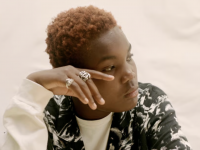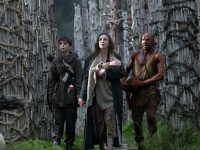
Elizabeth Grant, better known to the world as Lana Del Rey, is famous for her alternative, melancholy pop style, but with time has she really grown into the smiling character pictured on the album cover of her new album Lust For Life?
Since being thrown into the limelight with the release of her “Video Games” single in 2011, Lana Del Rey’s album titles are beginning to appear more optimistic, transitioning from Born To Die and Ultraviolence, to 2015’s Honeymoon and her latest offering, Lust For Life. The album artwork was shot in front of the same exact truck used on Born To Die, but her stern look has changed dramatically.
Her emotional style was taken even further on the albums that followed Born To Die, drawing influence from 70’s rock, hip hop and more to create her take on what a pop album could be. Del Rey has never seemed to change for the industry, and she appears to be very genuine. Her unconventional attitude is portrayed in both her lyrics, and the expressive way in which she sings them. As with Adele and Amy Winehouse, Del Rey always hides a story in between the metaphors.
Lust For Life opens in classic Lana Del Rey style, and “Love” holds up easily against any of her best singles, though the content does not appear to match her grinning face on the album cover, and is far from uplifting. It is, however, a grand production of strings and guitars, driven by booming tom drums. Her trademark of megaphone distorted vocals towards the end of the track are reminiscent of Born To Die, and fans of Lorde’s new album Melodrama will certainly approve.
There are more features on this project than usual, mainly from hip hop and R&B acts. The Weeknd and A$AP Rocky are two choices that fit the bill perfectly, as they are both confident to experiment in the studio. The album’s title track has been receiving heavy radio support already, and you can hear why. It is a few minutes of musical magic from two of the industry’s most captivating singers.
Stevie Nicks is even credited on “Beautiful People Beautiful Problems”, their voices complimenting each other brilliantly. There is no doubt that this is a beautiful number, but the production sounds outdated and this is not the only throwback piece on the album. “Tomorrow Never Came” follows up, featuring none other than Sean Ono Lennon. There are references to classic rock in the lyrics, and there is an undeniably Beatles vibe throughout.
Where Del Rey really shines is on the more simple songs, whether accompanied by guitars and organs, or by tough hip-hop beats. “Change” is the album’s sweetest moment, featuring nothing more than her voice and a piano. The chorus on “White Mustang” is a winner, as is her hook on “Summer Bummer”; the rappers very nearly ruin a strong instrumental, though. On “Cherry” she becomes a different, much darker character. While the production takes ideas from both trap and trip-hop, she uses vocal techniques to create multiple personas. She breaks out of her whispery singing and spoken moments to occasionally display her perfectly accurate tones. With lyrics like “You wanna make the switch/be my guest, baby” on “In My Feelings”, she gets a few things off her chest, the trap drums adding to the attitude of the track, as does its Drum ‘n Bass-esque bass line.
For anyone hoping for some traditional Lana Del Rey sounds, there are lots to pick from. At 16 tracks long, the album will fade in and out with tracks like “God Bless America” becoming filler almost, but with the standard of quality throughout, she could have almost made two albums. Get stuck into this one and you will not regret it. Why not have a listen to it – or any of your favourite albums – in one of our demo rooms today?






